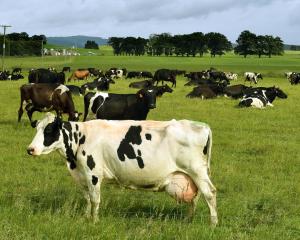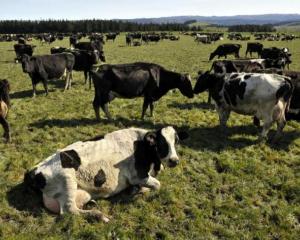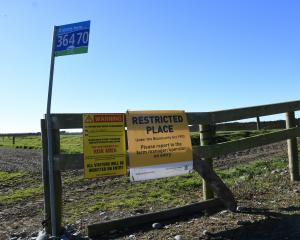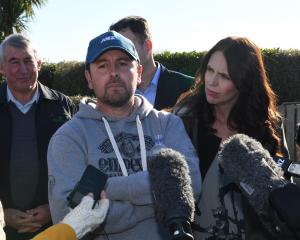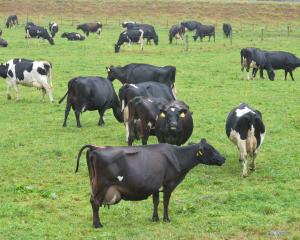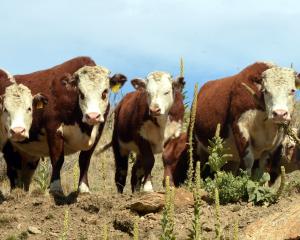Prime Minister Jacinda Ardern has just announced $886m will be spent on the phased eradication of the cattle disease Mycoplasma bovis and compensation for affected farmers, saying "we have one shot to eradicate".
- Cattle disease cull will hit like a drought: economist
- Earlier story: D-Day for dairy and beef farmers
More than 150,000 cattle will be culled in a world-first bid to eradicate cattle disease Mycloplasma bovis (M. Bovis).
The Government says it has reached an agreement with farming sector leaders to attempt to eradicate the disease from New Zealand.
The cull, of around 126,000 in addition to the 26,000 already underway, will take place over one to two years.
Prime Minister Jacinda Ardern said to not act would cost even more than what would be spent on trying to eradicate it - $886 million.
$1.3b over 10 years was the estimated cost of not acting.
"Today's decision to eradicate is driven by the Government's desire to protect the national herd from the disease and to protect the base of economy - the farming sector," Ardern said.
"This is a tough call - no one ever wants to see mass culls. But the alternative is the spread of the disease across our national herd," she said.
"I personally do not want to look back on this time ... and say I wish we had tried harder.
"We have this one shot to eradicate, and we are taking it together.
"We want New Zealand to be free of it," Ardern said.
The Government will meet 68% of the cost and Dairy NZ and Beef and Lamb New Zealand will meet 32%.
Ardern said there was "real chance" of eradication to protect the more than 20,000 dairy and beef farms.
She said New Zealand had some factors that made it possible for it to be the only country to ever eradicate the disease - it was early in the outbreak, New Zealand had natural borders, and there was only one strain identified so far.
Agriculture Minister Damien O'Connor, a former sharemilker and farmer, said it was a tough call.
"It's really tough on the families who are in the firing line of this terrible disease," he said.
Mass culls were necessary because there were no clear tests, he said.
"There will be active, intensive surveillance across the farming sector over the next 10 years."
O'Connor said it was a wake-up call for biosecurity.
"Farmer welfare is the forefront of everything we are thinking about."
DairyNZ says it stood with the government in support of the decision to try to eradicate the cattle disease from New Zealand.
"The decision wasn't made lightly and reflects our hope that the disease can be eradicated," said DairyNZ chair Jim van der Poel.
"Our farmers have been waiting for almost 11 months on a way forward and part of the challenge has been a lack of certainty about the long-term solution for New Zealand. Today we have that certainty.
"Over 99% of our dairy herds in New Zealand have no signs of this disease, and we want to keep it that way," he said.
"DairyNZ has been actively – and passionately – working on behalf of our farmers to find a solution. We know that moving towards eradication will be a devastating decision for some, and will mean that thousands of animals will have to be culled.
"This was not an easy decision to make for those reasons, and our hearts and thoughts are with the farmers that have affected herds."
Federated Farmers president Katie Milne called it an "excrutiating experience".
She said it was one of those times where "you've got to have a crack".
Beef+Lamb head Andrew Morrison said affected farmers were under huge pressure.
"It is a decision that could have gone either way".
But eradication was only on the table for a short time.
Culling will involve all cattle on infected properties along with cattle on most restricted properties.
All infected farms found in future will be "de-populated".
Following depopulation, they will be disinfected and lie fallow for 60 days after which they can be restocked.
About 4.2 million cattle are slaughtered annually in New Zealand, this includes 1 million dairy cattle, 1.4 million beef cattle and 1.8 million calves.
It said it was confident meat processors could handle the increased cull.
About half of the 23,000 cattle to be culled as a result of the outbreak, which is not harmful to humans, have been slaughtered already.
As at May 24, the number of infected farms was 37, in Waikato, Hawke's Bay, Manawatū, Canterbury, Otago and Southland.
High-risk animal movements have been traced to 3000 farms. About 300 properties are in biosecurity lockdown and 858 are under surveillance.
No country with M. Bovis has managed to eradicate the disease. Until July last year, when the first case was reported in a South Canterbury farm, New Zealand was one of only two countries that were free of M. Bovis. Norway is now the only one.
Comments
It's interesting that now the government have a way to reduce pollution levels in our rivers, shame about our economy and the well-being of the dairy community. I suppose at least there will be an increase in labour's voter base come next election.
Kinda looks like a plan too good to be true for Labour.

